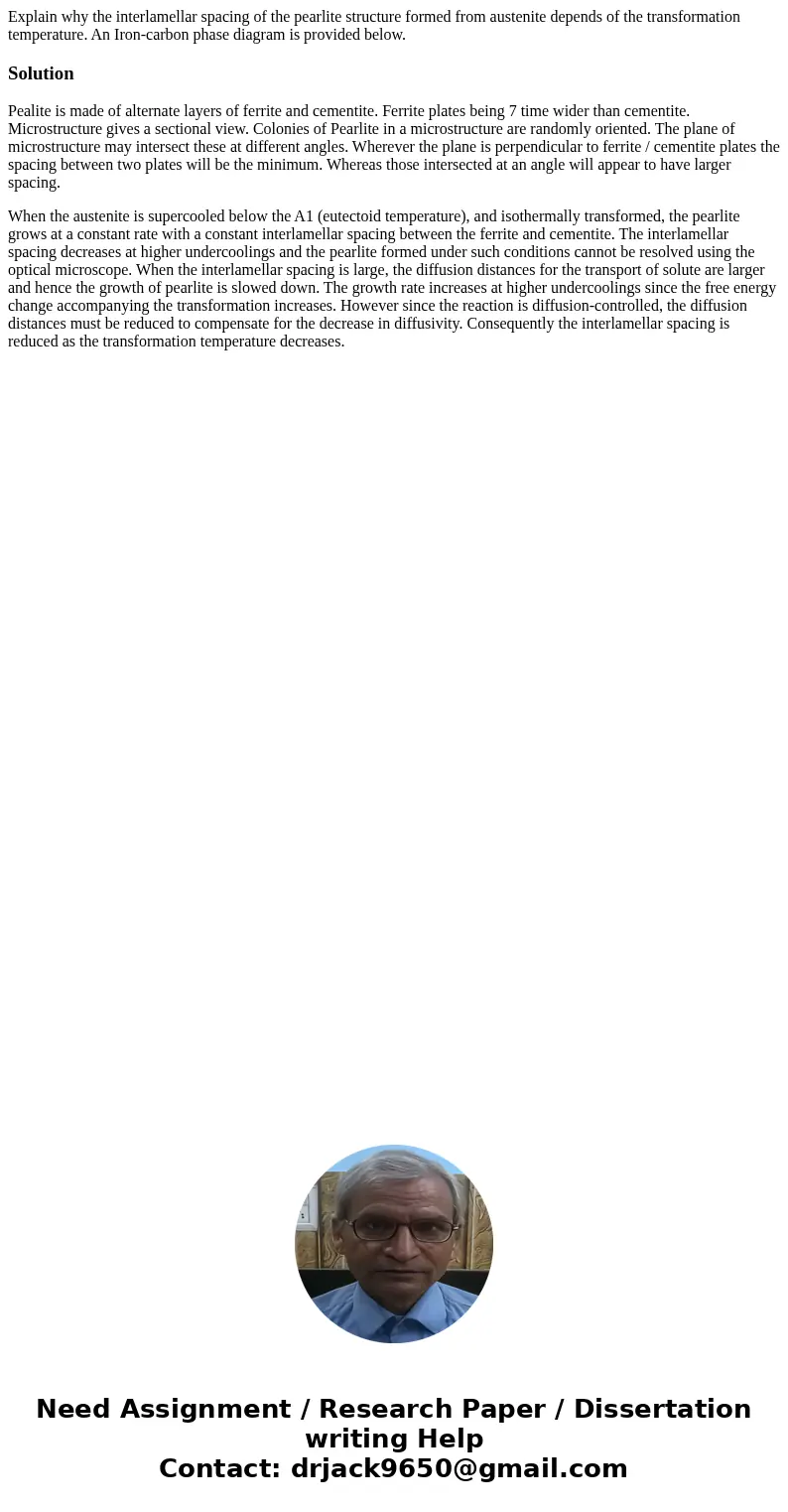Explain why the interlamellar spacing of the pearlite struct
Explain why the interlamellar spacing of the pearlite structure formed from austenite depends of the transformation temperature. An Iron-carbon phase diagram is provided below.
Solution
Pealite is made of alternate layers of ferrite and cementite. Ferrite plates being 7 time wider than cementite. Microstructure gives a sectional view. Colonies of Pearlite in a microstructure are randomly oriented. The plane of microstructure may intersect these at different angles. Wherever the plane is perpendicular to ferrite / cementite plates the spacing between two plates will be the minimum. Whereas those intersected at an angle will appear to have larger spacing.
When the austenite is supercooled below the A1 (eutectoid temperature), and isothermally transformed, the pearlite grows at a constant rate with a constant interlamellar spacing between the ferrite and cementite. The interlamellar spacing decreases at higher undercoolings and the pearlite formed under such conditions cannot be resolved using the optical microscope. When the interlamellar spacing is large, the diffusion distances for the transport of solute are larger and hence the growth of pearlite is slowed down. The growth rate increases at higher undercoolings since the free energy change accompanying the transformation increases. However since the reaction is diffusion-controlled, the diffusion distances must be reduced to compensate for the decrease in diffusivity. Consequently the interlamellar spacing is reduced as the transformation temperature decreases.

 Homework Sourse
Homework Sourse